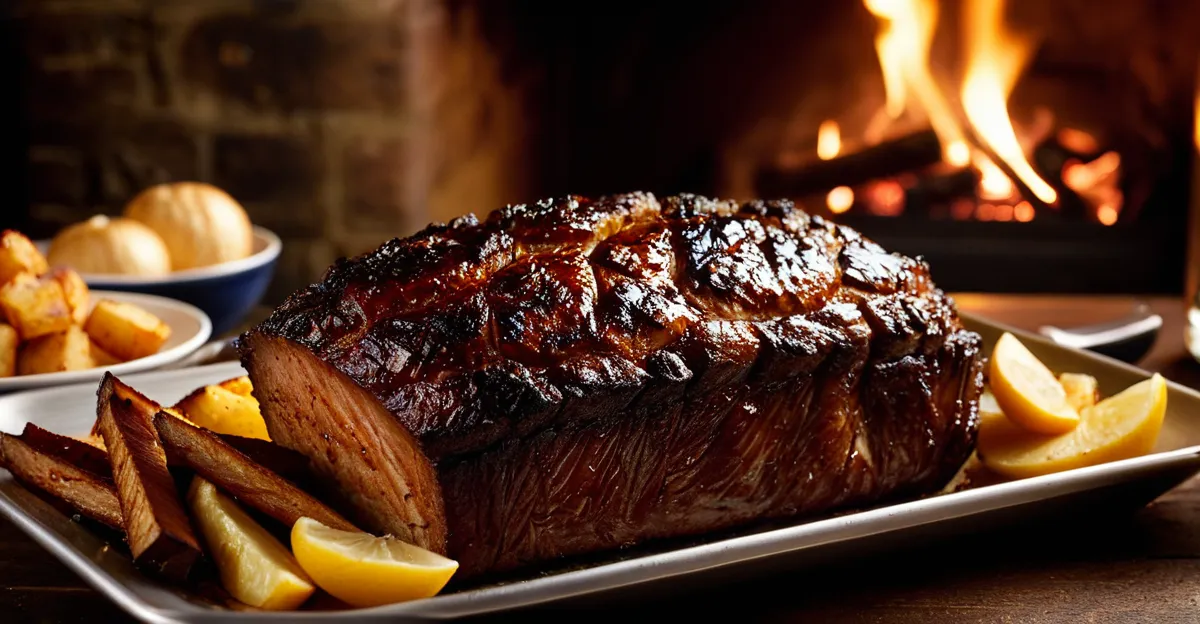Core Elements of Traditional British Roasts
Traditional British roasts revolve around a selection of classic roast meats including beef, lamb, chicken, and pork. Each meat brings its own rich, distinctive character to the British roast flavors, with beef offering robust depth, lamb a slightly gamey zest, chicken a mild succulence, and pork a sweet richness. These meats are often roasted to perfection, using time-honored techniques that lock in juices and enhance flavor.
Accompanying these meats are hallmark British roast staples that are essential to the full experience. Yorkshire pudding stands out as a beloved side, prized for its crisp exterior and airy, soft inside. Roast potatoes provide the perfect crunchy contrast, while rich gravy—often made from meat drippings—ties the plate together with savory warmth. Seasonal vegetables, such as carrots, parsnips, and green beans, add freshness and balance.
Also to see : How can you recreate an authentic full English breakfast at home?
The signature flavor profiles of British roasts are shaped through classic preparations and herbs like rosemary, thyme, and sage. These seasonings complement each meat type naturally, crafting the complex but comforting tastes for which traditional British roast dinners are celebrated. Together, the meats, sides, and seasonings form a harmonious meal that honors centuries of culinary tradition.
Understanding Distinctive Flavors Through Customary Seasonings and Ingredients
The richness of British roast flavors stems significantly from carefully chosen British roast seasonings. Herbs like rosemary, thyme, and sage are foundational, providing fragrant, earthy notes that enrich the natural taste of traditional roast meats. Mustard, either mustard powder or whole grain, adds a subtle heat that can cut through the richness of roasted beef or pork.
Topic to read : What are the secrets to a traditional shepherd’s pie?
Classic roast ingredients go beyond herbs to include seasoning pairings that enhance the specific meats. For example, horseradish is a traditional companion for roast beef, its pungent sharpness elevating the beef’s deep flavor. Mint sauce beautifully complements lamb, offering a refreshing contrast, while apple sauce adds a sweet tanginess that balances the fatty pork.
Roasting methods themselves play a critical role in flavor development. Slow roasting at controlled temperatures allows the meat to retain moisture and absorb the aromatic herbs fully. Utilizing locally sourced, seasonal vegetables as traditional accompaniments ensures freshness and aligns with British culinary customs, creating a well-rounded meal that highlights both meat and seasonal produce harmoniously.
These careful flavor-building techniques demonstrate how classic seasonings and preparation methods define the distinctive, comforting identity of British roasts.
Experiencing British Roasts at Home
Making authentic British roast recipes at home is about balancing the traditional elements with practical cooking approaches. Start with selecting quality traditional roast meats—whether beef, lamb, chicken, or pork. Each requires specific preparation: beef benefits from resting after slow roasting; lamb should be seasoned well with rosemary or mint; chicken needs even cooking to maintain moistness; and pork excels with a crispy crackling skin.
To recreate traditional British tastes, follow simple yet precise steps for each component. Yorkshire puddings demand a batter of eggs, flour, and milk, rested before baking in hot fat to achieve puffiness. For rich gravies, use pan drippings combined with stock and herbs for depth of flavor. Roast potatoes become perfectly crispy when parboiled first, then roasted in hot fat until golden.
Ingredient sourcing influences results heavily. Opt for local, seasonal vegetables like carrots and parsnips to accompany your meal, aligning with British culinary practices. Fresh herbs—rosemary, thyme, sage—enhance the aroma and taste distinctly. By adhering to these tips, home cooks can bring the warmth and character of a classic roast dinner into their own kitchens, making the traditional flavors accessible and satisfying.
Experiencing British Roasts Out and About
Exploring British roast restaurants offers a wonderful way to enjoy this beloved meal beyond home kitchens. Many traditional pubs and eateries across the UK pride themselves on serving authentic roast dinners that celebrate classic flavors and time-honored techniques. When choosing where to try British roasts, look for venues that emphasize quality traditional roast meats like beef, lamb, chicken, and pork, as well as freshly prepared British roast staples such as crispy roast potatoes, Yorkshire puddings, and rich, flavorful gravies.
A memorable dining experience often includes seasonal vegetables sourced locally, reflecting the long-standing connection between British roasts and regional produce. Some establishments feature unique regional specialties that enhance the meal’s authenticity, such as roast lamb with mint sauce in Yorkshire or pork with apple sauce in the West Country.
Seasonal menus can also highlight the best ingredients available at any given time, providing a variety of tastes within the traditional framework. Enjoying a British roast in a pub or restaurant setting invites not only a delicious meal but also an immersion in the cultural and social atmosphere that surrounds this culinary tradition. This makes dining out for a roast a warm, communal experience cherished across the UK.






